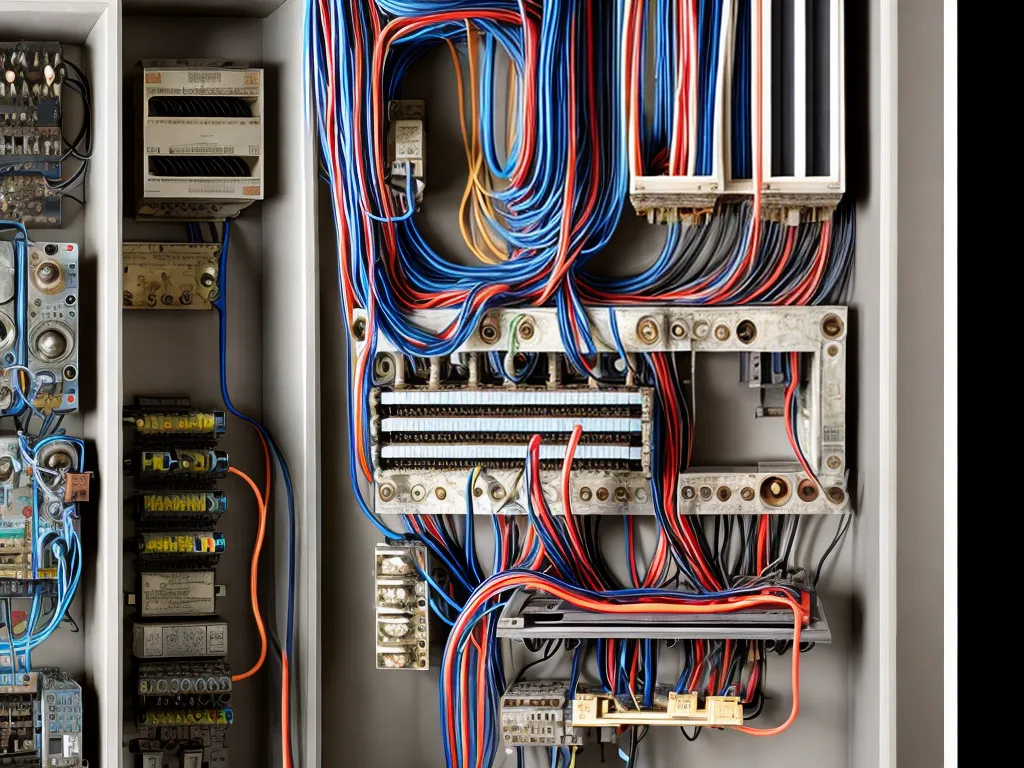
The Forgotten History of Knob-and-Tube Wiring
Introduction
Knob-and-tube wiring was the standard method of electrical wiring used in buildings in North America from about 1880 to the 1940s. This old wiring system has largely been forgotten today, but it's important to understand its history and how it worked. In this article, I'll provide an in-depth look at the rise and fall of knob-and-tube wiring.
What is Knob-and-Tube Wiring?
Knob-and-tube wiring consists of insulated copper conductors running through ceramic knobs and tubes. The knobs hold the wires away from framing members, while the tubes protect wires where they pass through joists and studs.
Some key features of knob-and-tube wiring:
- No outer sheathing - The wiring is open and exposed.
- Air is the insulator - The air between the unsheathed wires acts as the insulating material.
- Separate wires - The hot and neutral wires are run separately, usually about 1 inch apart. This prevents arcing between the wires.
- ** openings** - The knobs and tubes have small openings which allow cool air to circulate around the wires. This prevents heat buildup.
While strange looking to modern eyes, this approach prevented electrical fires and allowed heat to dissipate from the wires.
The Origins of Knob-and-Tube Wiring
Knob-and-tube wiring originated in the 1880s with the early days of commercial electrical power distribution. Thomas Edison popularized the use of copper wiring insulated with cotton or linen thread wrapped in paraffin wax. This was an improvement over older "gas pipe" wiring with little insulation.
However, the insulation in early solid wires would still heat up and degrade over time. Herbert Rogers solved this problem by inventing a two-wire system with air as the primary insulator. Separate wires were held apart by porcelain knobs, and protected where they passed through wood framing by porcelain tubes.
This knob-and-tube wiring quickly became the standard for new construction. It was commonplace in American and Canadian homes by about 1905. By 1930, nearly all residential wiring was knob-and-tube.
Pros and Cons of Knob-and-Tube Wiring
Knob-and-tube wiring had several key advantages and disadvantages:
Advantages
- Less prone to insulation breakdown - Air insulation prevented internal heat buildup.
- Flexible routing - Wires could bend and snake around framing members.
- Open installation - Errors could be easily inspected and corrected.
Disadvantages
- Higher resistance - Smaller gauge wire with rubber insulation was used.
- Lack of grounding - No equipment grounding was provided, only basic polarization.
- Difficult upgrades - Fishing new wires was hard without access points.
- Incompatible materials - Not designed to be embedded in insulation.
Overall, knob-and-tube was well-suited to its time based on the available materials and installation methods. However, newer wiring technologies eventually outpaced it.
The Fall of Knob-and-Tube Wiring
By the 1950s, knob-and-tube wiring was on its way out in favor of newer wiring methods like nonmetallic sheathed cable. Several factors led to the decline of knob-and-tube:
- Insulation issues - Embedding knob-and-tube in structure insulation caused overheating.
- Increasing loads - Larger loads required heavier gauge wiring than knob-and-tube could provide.
- Grounding needs - Ungrounded knob-and-tube couldn't meet new safety standards.
- Difficult upgrades - Inaccessible wiring made upgrades expensive and destructive.
By the 1970s, knob-and-tube served as little more than danger branch circuits in older homes. Most of it has now been replaced, abandoned, or permanently disconnected.
Treating Old Knob-and-Tube Wiring Today
While no longer used for new construction, knob-and-tube wiring can still be found in older homes. This presents safety issues if deteriorated or overloaded. There are three main approaches to treating old knob-and-tube today:
- Full replacement - The most expensive but safest option. Allows rewiring the home from scratch.
- Pigtailing - Attaching grounded cables to fuse boxes to create three-prong outlets. Provides grounding but leaves old wiring in place.
- Abandonment - Disconnecting and capping off unused knob-and-tube circuits. Prevents overloading but reduces capacity.
In many cases, a combination of partial replacement and abandonment of unsafe circuits is the most practical solution. Rigorous insulation and frequent inspection are also essential.
While knob-and-tube wiring revolutionized electrical distribution in its era, its limitations became clear over time. But understanding it remains key for working with older buildings today. This forgotten wiring method left an enduring legacy that lingers on in our walls.